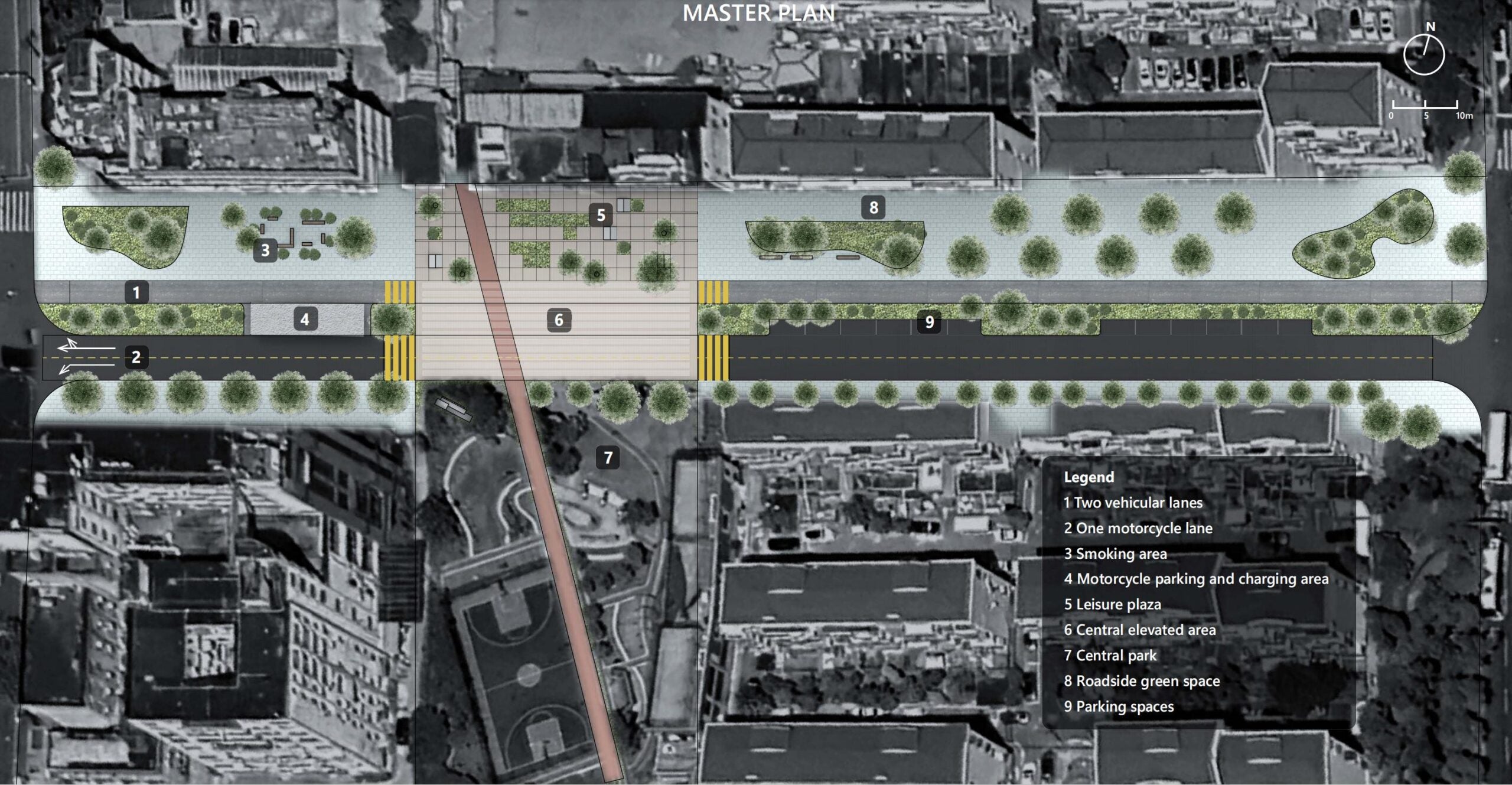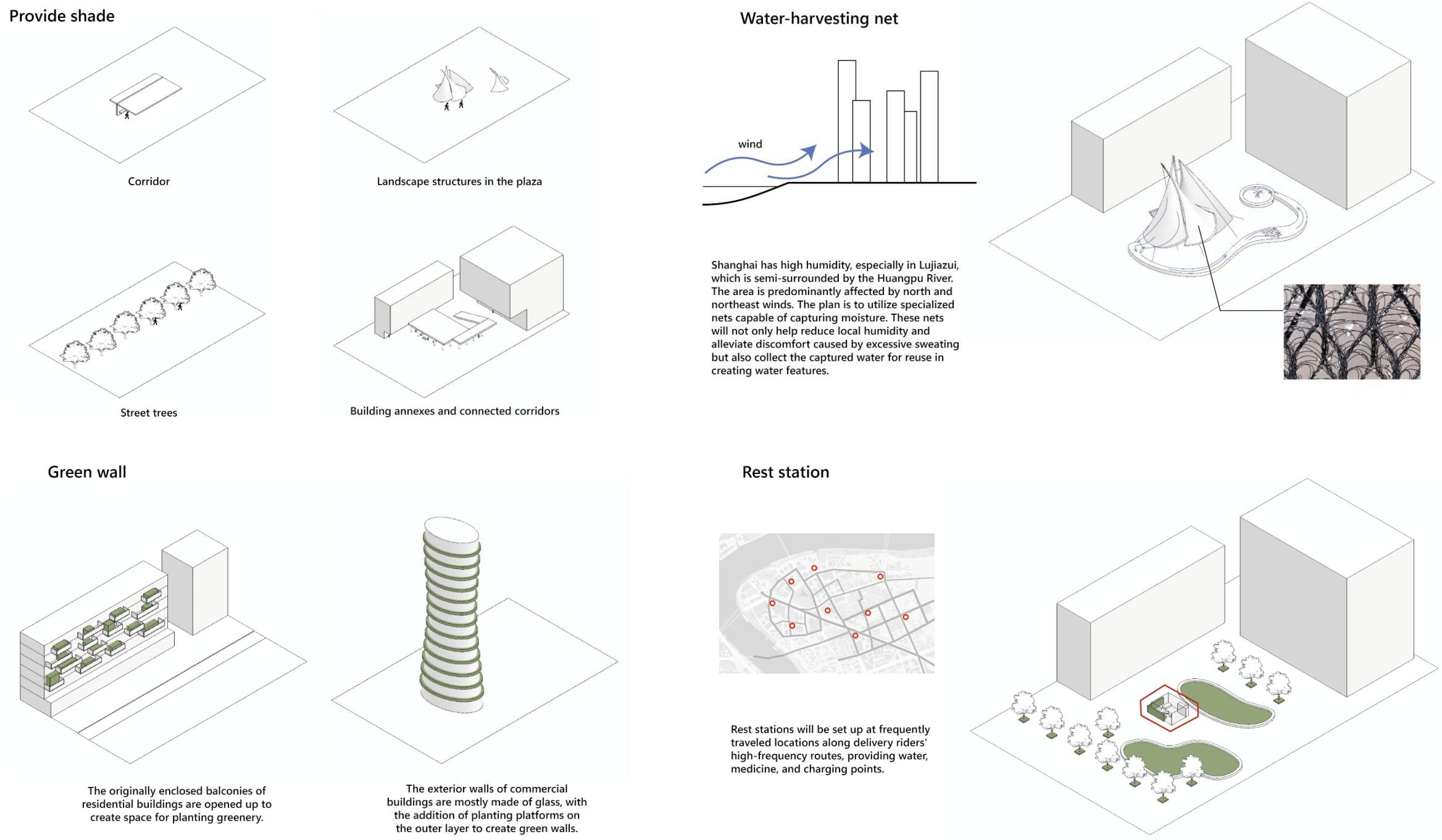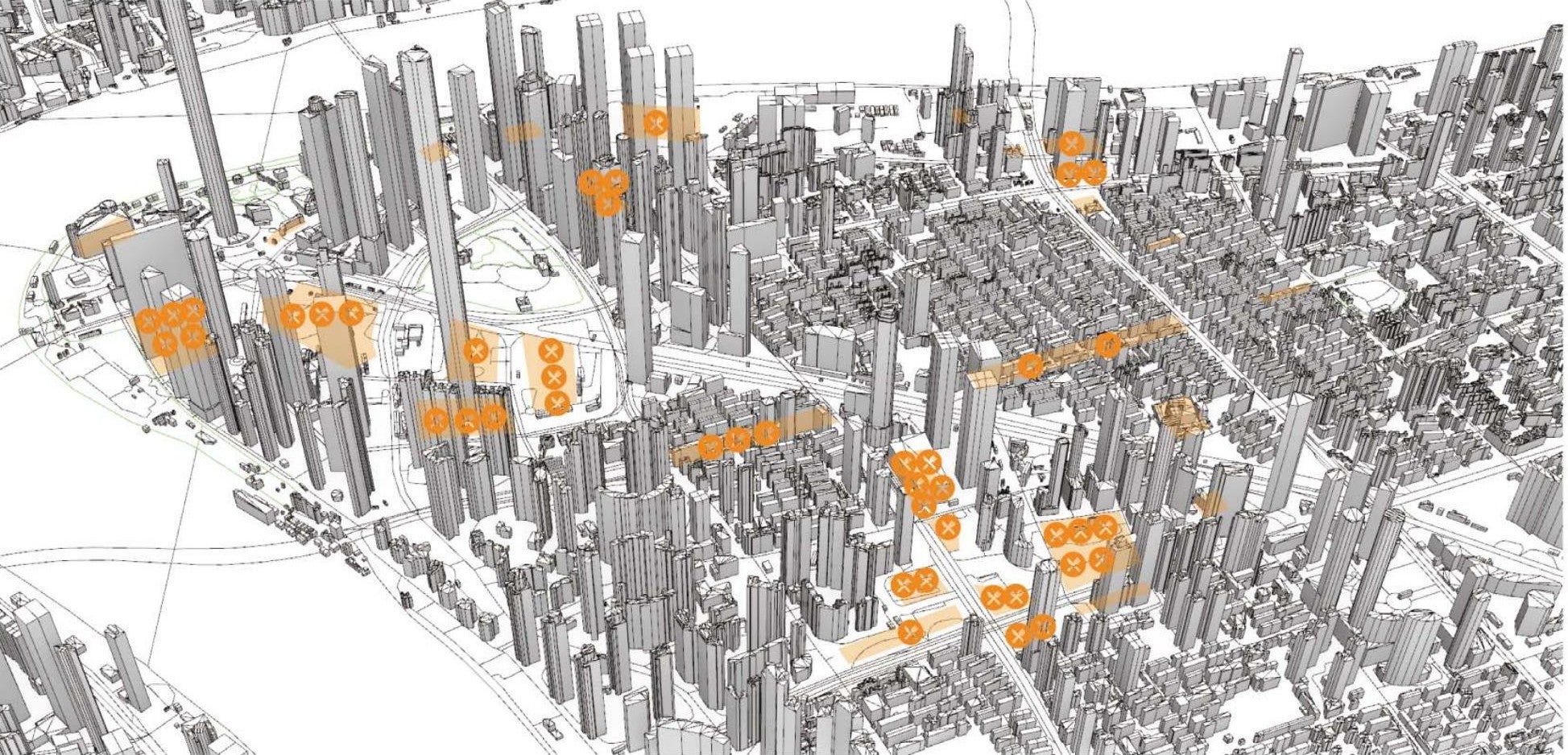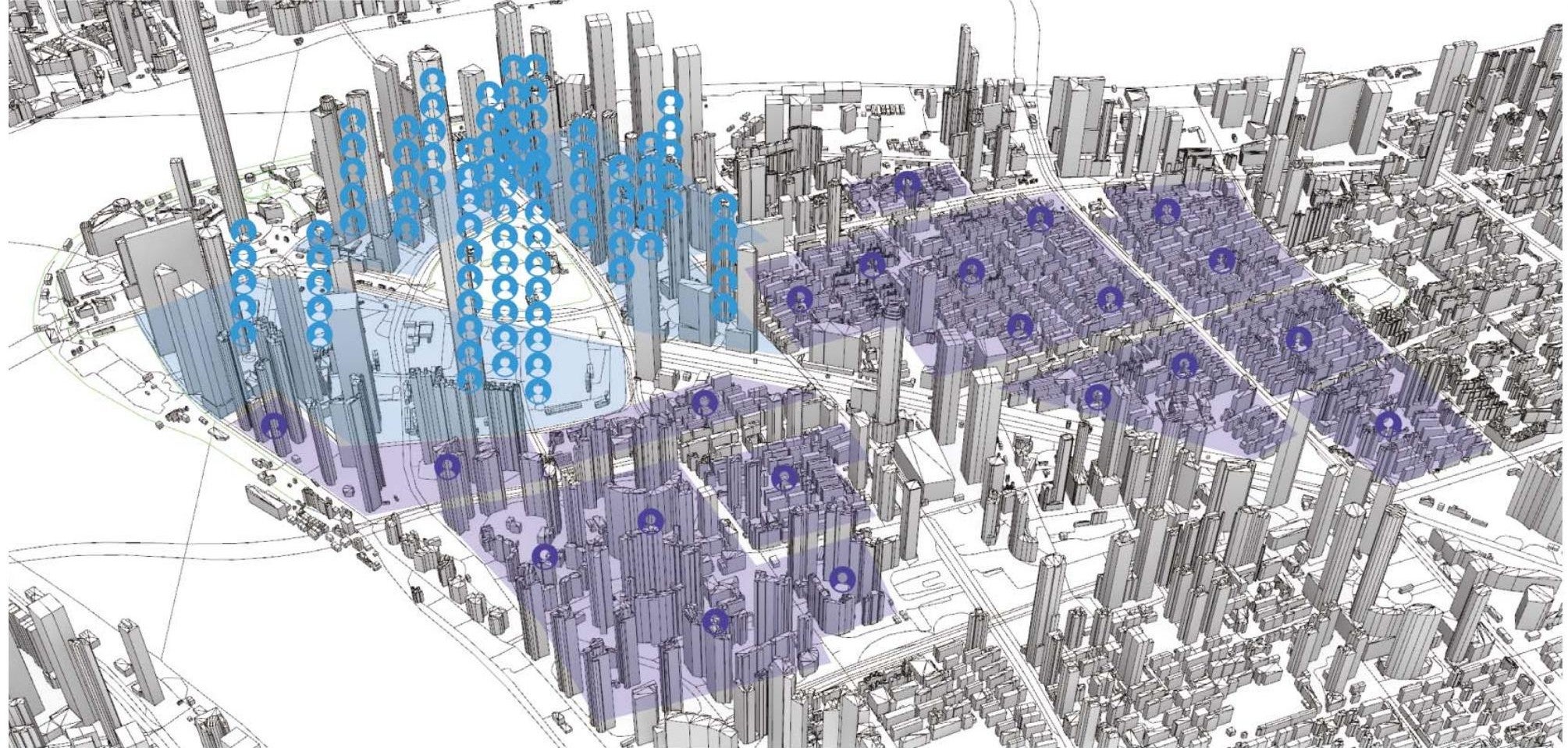Thermal Comfort-Oriented Street Space Redesign Centered on Food Delivery Workers in Lujiazui, Shanghai

This project focuses on the real-life delivery routes and working conditions of food delivery workers in Lujiazui, Shanghai. By closely examining their daily routines, movement patterns, and the environmental challenges they face—particularly those related to extreme heat and urban microclimates—the study seeks to propose targeted optimisations to the current delivery system. In order to enhance the safety, comfort, and efficiency of their working environment, the project rethinks and redesigns outdoor spaces such as streets, sidewalks, and rest points through a people-centred and climate-responsive lens.
Two specific sites are selected for in-depth design intervention: one located in the high-density central business district (CBD), and the other in a nearby residential area that frequently appears in delivery routes. Through design strategies including the addition of greenery, the provision of shaded areas, the introduction of resting and waiting spaces, and the reorganisation of street layouts to reduce heat exposure and improve circulation, the project aims to improve the overall thermal comfort of urban outdoor environments. Ultimately, this design research offers a practical and human-centred approach to making fast-paced, high-temperature urban areas more inclusive and resilient for vulnerable worker groups.

The static design component encompasses two key aspects of urban intervention. First, it involves strategically establishing dedicated pickup and dropoff points that seamlessly integrate with outdoor rest areas for delivery riders. These hybrid spaces will serve dual purposes functioning as efficient logistical nodes while addressing riders’ basic needs during waiting periods. Second, the design extends to improving residential neighborhoods where many riders live, creating better living environments that support their demanding work schedules.


